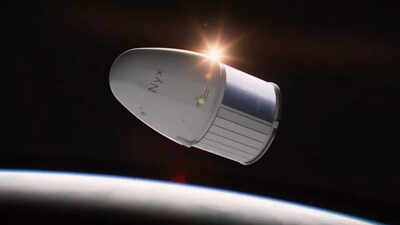ARTICLE AD BOX

In a mission that blends space exploration with personal tribute, SpaceX is preparing to launch over 150 capsules containing cremated human remains and DNA samples into low Earth orbit on June 23. The launch is part of the Transporter 14 rideshare mission and features a collaboration between Houston-based space burial company Celestis and European spacecraft firm The Exploration Company (TEC). Dubbed the Perseverance Flight, the symbolic journey allows families from around the world to send loved ones, or a piece of themselves, into space, either in memoriam or as a legacy of cosmic curiosity. This unique mission will orbit Earth before reentering and splashing down in the Pacific Ocean.
SpaceX mission turns final farewells into orbital journeys
Since 1994, Celestis has pioneered
space burial services
, offering people the chance to honour their loved ones with a final journey beyond Earth. The Perseverance Flight represents the company’s 25th mission and 12th “Earth Rise” flight, in which remains are sent into orbit and then returned. Unlike deep space or lunar memorials, this Earth orbit mission allows the capsules to be recovered, giving families a keepsake that has truly travelled through space.
A diverse passenger list, from pets to presidents
Celestis has previously flown the remains and DNA of celebrities, pets, and even historical icons. Past missions have included symbolic remains of U.S. presidents like George Washington and John F. Kennedy, as well as Star Trek legends such as Gene Roddenberry and Nichelle Nichols. This time, among the participants is 3-year-old Matteo Barth, who will become the youngest European to send DNA into space, symbolically joining his late grandfather, a space enthusiast.
How the mission works
The memorial capsules will be housed inside TEC’s Mission Possible spacecraft, which will launch atop a SpaceX Falcon 9 rocket from Vandenberg Space Force Base in California. After reaching orbit, the capsule will complete two or three circuits around Earth before reentry. The payload will then splash down in the Pacific, where recovery teams will retrieve it and return the capsules to families as space-flown mementoes.
Why people are choosing space burials
For many, sending DNA or ashes into space offers a meaningful, personalised way to honour someone who loved science, exploration, or the cosmos. Others see it as a way to symbolically become part of humanity’s spacefaring future. The act turns remembrance into an extraordinary voyage, often fulfilling lifelong dreams of touching the stars, if only in symbolic form.This is TEC’s second demonstration mission before the debut of its Nyx Earth orbital vehicle, planned to dock with the ISS by 2028. For Celestis, the partnership represents new possibilities in accessible space memorials. As commercial spaceflight becomes more routine, missions like this reflect how deeply space has entered the realm of human storytelling and legacy.



.png)
.png)
.png)
















 2 hours ago
5
2 hours ago
5









 English (US) ·
English (US) ·